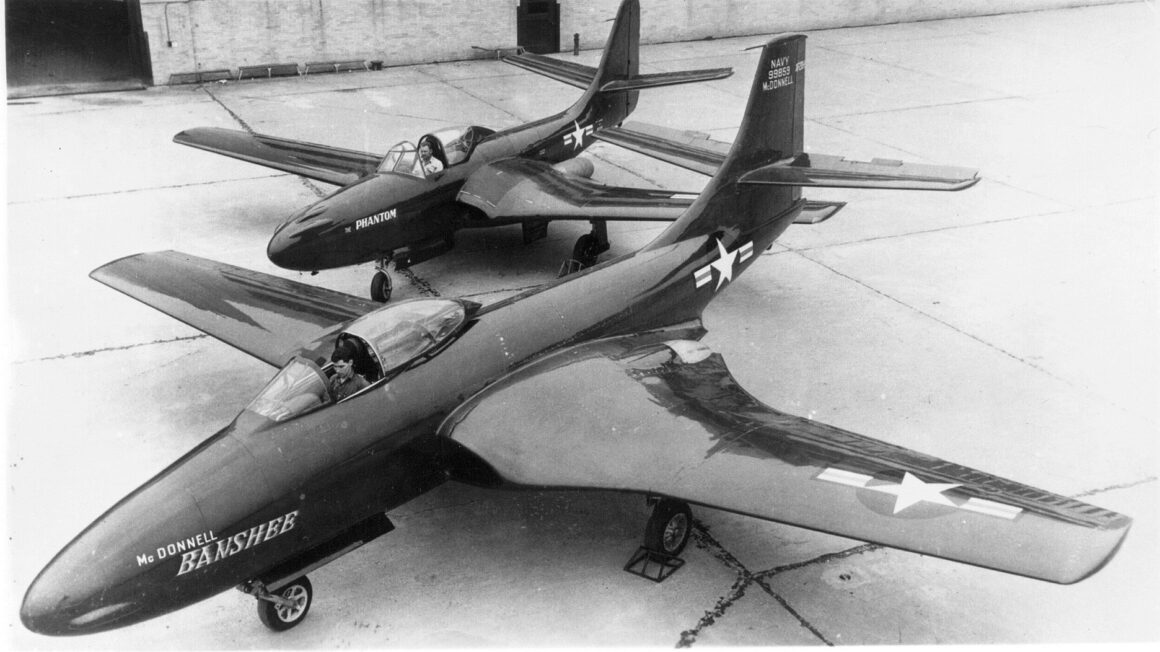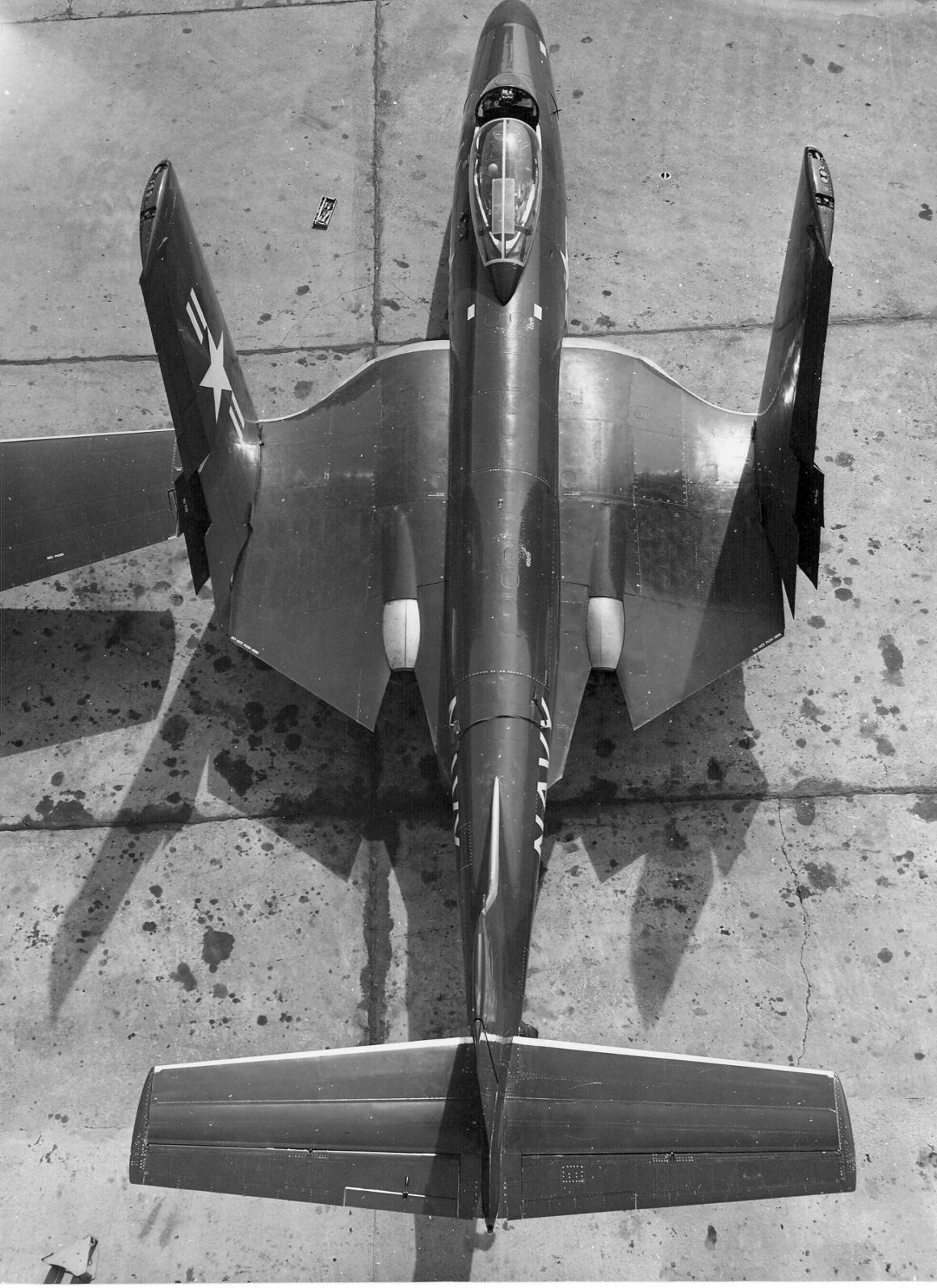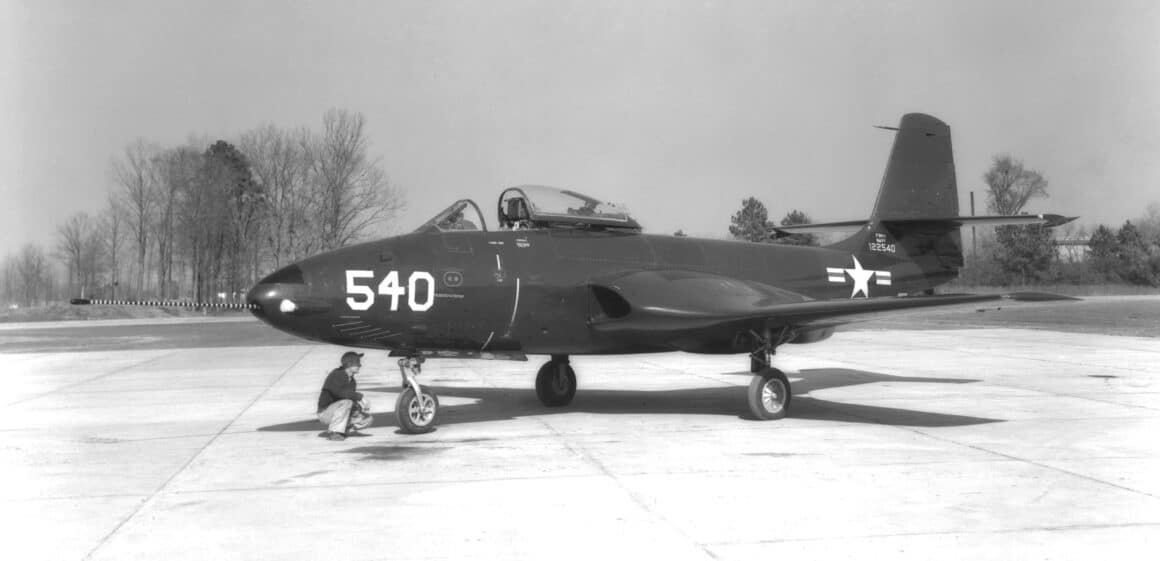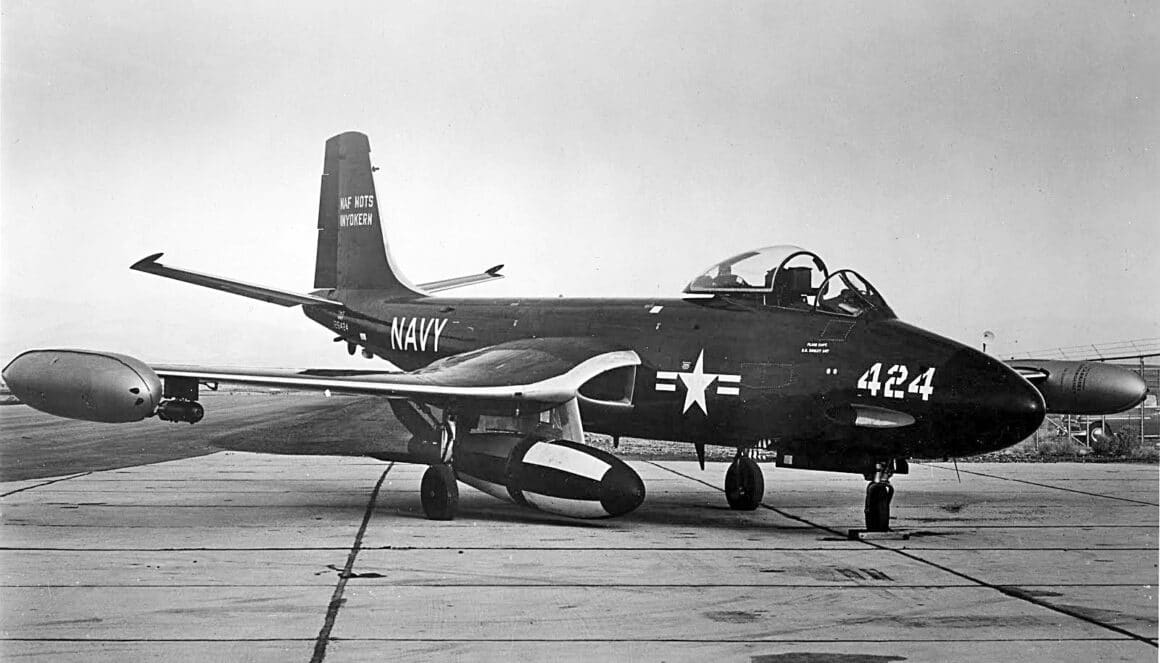The Banjo Served With Distinction During Turbulent Times
McDonnell’s F2H Banshee was a development of the company’s first jet-powered fighter aircraft, the FH-1 Phantom. In fact the Banshee was being developed before McDonnell began building Phantoms for the US Navy. Originally intended to be nothing more than an improved Phantom, revised Bureau of Aeronautics (BuAer) requirements for improved (read heavier) armament and greater fuel capacity soon morphed the Banshee into an entirely new airframe. The Banshee was often referred to as the Banjo.

Building a Better Phantom
The Banshee incorporated newly-designed Westinghouse J34 turbojets capable of roughly twice the thrust provided by the Phantom’s J30 engines. However, the increased size of the J34 required larger wing roots in which to mount them. In fact the wing was larger in every aspect, as was the fuselage in order to accommodate the increased fuel capacity. The Banjo would also be equipped with an ejection seat along with a fully pressurized and air-conditioned cockpit and electrically-operated flaps, folding wings, landing gear, canopy, and air brakes. Four 20 millimeter cannon replaced the four .50 caliber machine guns used in the Phantom. The cannons were mounted low in the nose of the jet to negate muzzle flash.

A Who Knew?
Equipped with tricycle landing gear, the Banshee incorporated another first. The nose gear was augmented by a pair of very small wheels forward of the standard nose wheel. That nose wheel could be independently retracted allowing the jet to be supported by the smaller wheels, resulting in a tail-high stance. The intention was to save space on the hangar deck by allowing the Banshee to tuck its nose under the tail of the aircraft in front of it. The kneeling nose wheels also enhanced deck personnel and handler safety as the exhaust from the jet’s engines would be deflected upward when taxiing with the tail high. The feature was deleted from the Banshee after the first variant (the F2H-1).

First Look at a New Jet
The first look at the new jet, then designated the XF2D-1, was provided by the initial mockup of the aircraft which was completed in April 1945. Unlike many other aircraft under development at the time, work on the Banshee survived the cut at the end of the war, although development work was slowed somewhat. The first of three prototypes was not completed until late 1946. On 11 January 1947 an XF2D-1 flew for the first time from the McDonnell facility at Lambert Field in St. Louis MO. Not long thereafter the XF2D-1 was redesignated XF2H-1. The initial order for 56 F2H-1 Banshees was placed in May of 1947.

Into Service
The first F2H-1s had slightly longer fuselages with additional fuel capacity along with thicker wings, empennages with slightly smaller vertical stabilizer fairings, and eliminated dihedral for the horizontal stabilizers. The initial Banshees were fitted with more powerful J34 engines when they became available. The first F2H-1 Banshees were delivered to VX-3 based at Naval Air Station (NAS) Atlantic City in August of 1948. This squadron carried out carrier qualification of the Banshee aboard the USS Franklin D. Roosevelt (CVB-42). In March of 1949 the Banshee first went into squadron service with VF-171 Phantom Fighters based at NAS Cecil Field in Florida.

